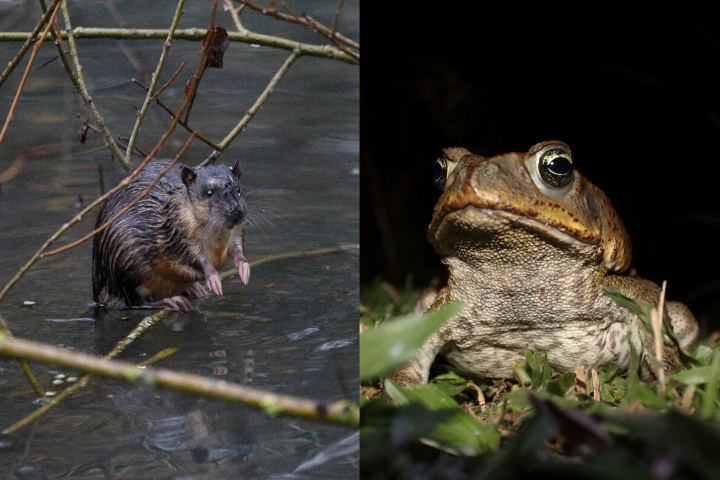Highly intelligent, semi-aquatic rodents in Australia have figured out how to precisely cut open the toxic bodies of an invasive species in order to partially eat them, researchers have found.

Australian water rats, otherwise known as rakali in Western Australia, have learned to target poisonous cane toads by making small, neat incisions to eat their hearts and livers, all the while avoiding their highly lethal skin and glands.
In a study published to Australian Mammology last month, researchers found that the water rats adapted to hunting the toads just within two years of the amphibians moving into their territory.
READ MORE: Conservation group urges Canadians not to spread invasive species
Since then, the toad population has spiralled out of control, resulting in the decline, and in some cases, extinction of several native species across the country.
The toxin the toad produces is found in its parotoid glands, which are found on its back, neck and shoulders. That toxin is the fatal factor in killing off larger predators who have mistaken the toads as their next lunch.

Cane toads arrived at the field site in “Kimberley, Western Australia, in 2011-12, leading to a crash in the populations of predators including numerous lizards and northern quolls,” wrote Marissa Parrott and Simon Clulow, two researchers from the study in an article for The Conversation.
“However, in 2014 we found a creek dotted with the bodies of cane toads that had clearly been attacked. Every morning we discovered up to five new dead toads with small, near-identical incisions down their chest in just a five-metre stretch of creek.
“What was using almost surgical precision to attack these toads?”
A postmortem by the researchers showed that the hearts and livers of larger toads were specifically removed, while the toxic-containing gall bladders had been neatly pushed aside.
Speaking with the The Guardian, Parrott suggested that the rats were specifically targeting them because it would be easier to avoid their toxic organs, as well as getting a “bigger payload” by eating larger hearts and livers.
“The water rats could protect small areas and could slow the progression of toads,” said Parrott, a reproductive biologist at Zoos Victoria.
READ MORE: Asian carp — Why this invasive species is so dangerous to the Great Lakes
Medium-sized toads, on the other hand, had the toxic skin scraped off their back legs and muscles eaten, on top of having their heart and liver eaten.
“The finding intrigued us enough to dissect waterlogged and rotting toad bodies in 40℃ heat,” wrote Parrott and Clulow.
“Using remote infrared camera footage and analysis of the bites left on the muscle, we found our clever attacker — the native water rat!”

The nocturnal water rats have webbed feet and water-resistant fur, traits that have helped it to specially adapt to waterways.
According to the Parrott and Clulow, these water rats have been known to pass on their hunting strategies and tactics.
“While this behaviour seems to be confined to local populations, if these tactics spread, water rats may be able to suppress toad populations when they reach water bodies—another small line of defence against this toxic killer.”
- Green Party deputy leader given jail sentence for Fairy Creek old growth protests
- More financial institutes are offering crypto-services, survey shows
- Singh mulls TikTok return as U.S. nears potential ban over security fears
- EV sales in Canada rose in recent years despite higher interest rates. Why?




Comments